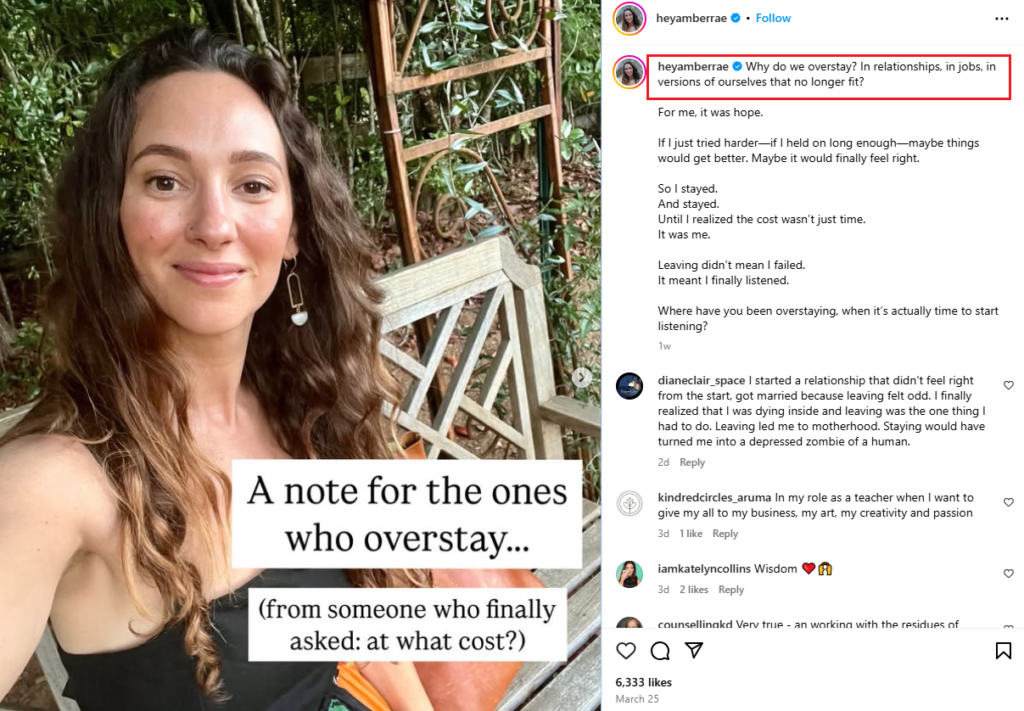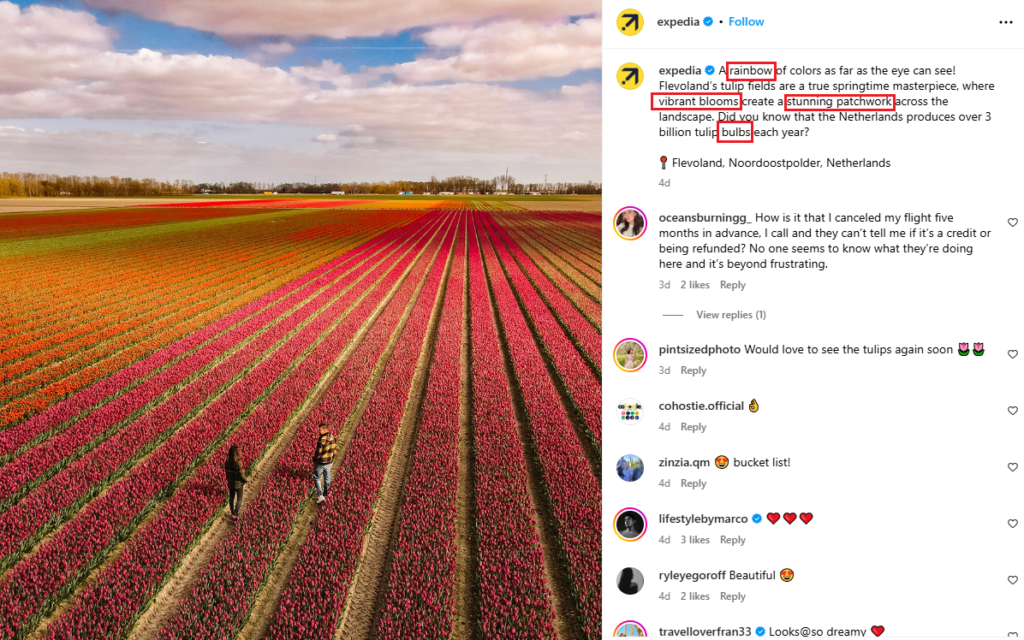Image by RDNE Stock project on Pexels
You want your Instagram content to go viral.
Guess what?
All your competitors want the same. In 2025, when over 90% of businesses and personal brands have at least one social media profile, engaging users and making them want to follow you is more challenging than ever. Whether you’re an essay writing assistance doing online essays for sale, a big beauty brand, or a small business selling furniture, it’s time for an extra step and alternative writing tactics to take the stage.
Below are your actionable strategies for writing for social media. Learn how to write engaging Instagram posts and get content-sharing tips that will make your writings shine.
Hook users from the very start!
While click-worthy headlines engage users to read long-form web content like blog articles or landing pages, Instagram captions aren’t about that.
You won’t write a headline here.
(Well, you can, but it will hardly attract the audience, given the specifics of this social media network.)
Your instrument here is the caption’s first three lines. (As you know, Instagram shortens the text after those three.) So, hook your target reader from the start:
Focus on the first sentence of your caption and make it intriguing enough that a user wants to click and keep reading. Professional essay writers and copywriters call this first sentence a hook.
Hook types are many, and the most popular one is a question. Ask something that triggers your target’s need or pain point, and you’ll make them click “More” to find the answer.
Essential: Resist the temptation of writing clickbait. Your question should be relevant to the information you’ll share in your caption. Respect your audience.

Not by questions alone. Below are some alternative hook ideas you can try for your Instagram captions:
- Quotes. A relevant quote from an influencer your followers love may boost their engagement with your post.
- Jokes. If your brand personality and voice allow, use humor to spark interest in your Instagram content.
- Statistics. Surprise the followers with a fact they might not know to spark curiosity.
- Misconception. A daring statement busting some myths your followers might believe will intrigue them to click and learn more.
- Start telling a story. Make the first sentence compelling so that readers want to find out what happened next.
More on Instagram storytelling below.
Tell stories and be authentic
Only the lazy didn’t hear about the power of storytelling for business, marketing, or personal branding. Here’s a quick reminder for you:
Storytelling is powerful because it’s about authenticity, experience, and feelings. People don’t retain and remember information through cold data and facts; 70% of it comes to the human brain through stories and 95% — through emotions.
What does it mean?
Tell them a story if you want your social media followers to listen to your message. A combination of marketing and fiction, it’s your chance to build a personal connection with users and boost your post’s virality.
A compelling story is your instrument to make users see the world through your eyes and relate to it.
How to write stories in Instagram captions?

- Be specific: Focus on stories that reflect your (your brand’s) nature.
- Be concise: As mentioned, hook users from the beginning so they want to click and read more. No lengthy intros: eye-catching or even eyebrow-raising first lines will create a wow effect that users can’t pass by. (We people are curious creatures, you know.)
- Follow the structure: Every story needs a hero and a plot, and relate to the real world so readers can recognize themselves in it. (“So true…” and “Aha!” are the reactions that make them like and share your Instagram posts. Some alternative storytelling tactics for Instagram can also help you reach this effect.)
Use emotional writing tactics
What words do you use when writing Instagram posts or other content?
Lexical items, word combinations, and visual hooks (sounds, content structure, sentence length, etc.) do matter for engagement, virality, and shareability. In marketing content, they may influence conversion. And all these are emotional writing tactics you can use to get users immersed and willing to respond.
What are they?
Power and sensory words
Power words are persuasive and descriptive lexical items that trigger an emotional response. (Depending on your words, this response can be positive or negative.) Power words can make a reader feel scared, curious, angry, encouraged, you name it! Spicing up your content with power words can compel the audience to take action.

Sensory words are lexical items appealing to the human physical senses. As a rule, they are specific, descriptive adjectives that help users “see,” “hear,” “taste,” “smell,” and “touch” the content while reading.

Power and sensory words work great because they activate a specific part of our brain responsible for experiences and emotions. That is why we process them faster and react to them stronger than other lexical items.
How to incorporate these words into your content?
- Use active voice and strong verbs.
- Add descriptive and beneficial adjectives.
- Avoid weak, redundant adverbs like “really,” “just,” “actually,” etc. Consider stronger verbs instead.
- Pinch your content with sensory details to evoke emotions.
Neuro-writing
Power and sensory words relate to neuro copywriting tactics, i.e., creating content with specific lexical patterns appealing to human psychology. They refer to mental hacks in your writing to influence the audience’s engagement, motivations, and buying behaviors.
It’s about particular words, word combinations and sequences, sounds, and tiny content formatting tricks that trigger an emotional response and make the users stay with your content.
For example:
- Questions in subheadings
- Two odd numbers in headings or writing hooks
- Beneficial adjectives in content
- Socratic method (three questions or three statements in a row at the beginning)
- Negative language where applicable
- Phonosemantics (Combining certain sounds to trigger particular associations and thus influence readers’ perceptions.)

Phonosematics in action: /g/ and /l/ sounds communicate shining and brightness
Make them see your posts
Users scroll their Instagram feeds fast, so you should make your post stand out and grab their attention. But:
Even if they click your post, they won’t read but scan it first, to understand whether it’s worth their time and further investigation. Follow the rules of web writing, and format your social media content so that it’s appealing and comfortable for online users to scan.
These are writing tricks to use:
- Short sentences and paragraphs
- Emojis
- White space and line breaks between paragraphs (Emojis and dots will help here)
- Calls to action in every post to encourage interaction (Like, shares, comments — all these are behavioral factors influencing your content’s visibility and virality.)
- Tags (Mention other brands, niche influencers, or followers whenever appropriate.)
- Hashtags (One to three most popular yet relevant to your content, to reach a broader audience)
Takeaways
Writing for social media is about authenticity, clarity, and emotional yet relevant messages resonating with your target audience. Do you want to craft shareable content that goes viral on Instagram?
Here are your strategies:
- Hook users with the first sentence to encourage them to click.
- Use storytelling.
- Consider emotional writing to stand out in user feeds and communicate messages they will remember.
- Format your content for better readability.
- Add some value to every content piece you share. Imagine yourself as a reader and answer the “What’s in there for me?” question before publishing.
Ready to write your next Instagram post that will go viral?





